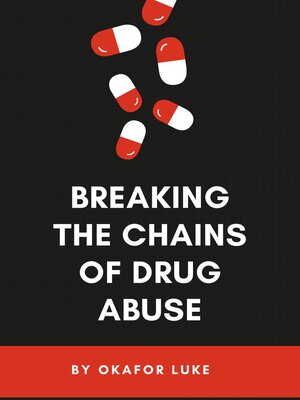Breaking the Chains of Drug Abuse
ebook ∣ Effects of Drug Abuse · Creating Appropriate Awareness on Diseases and Fitness-Related Topics
By LUKE OKAFOR

Sign up to save your library
With an OverDrive account, you can save your favorite libraries for at-a-glance information about availability. Find out more about OverDrive accounts.
Find this title in Libby, the library reading app by OverDrive.



Search for a digital library with this title
Title found at these libraries:
| Library Name | Distance |
|---|---|
| Loading... |
Breaking free from the chains of addiction sequel to drug abuse is a transformation journey that requires immense strength, determination and support. This comprehensive description delves into the multifaceted aspects of drug abuse, including its impact on physical and mental health, relationships and society generally. It explores the challenges individuals face when struggling with addiction and the various strategies and resources available to overcome substance abuse. Moreover, this description emphasizes the importance of awareness, education and compassion in supporting those on the path to recovery.
Drug or substance abuse is a pervasive global issue that affects individuals, families and communities. This description provides a comprehensive overview of drug abuse, exploring its definition, prevalence, causes, effects and treatment options.
The book begins by defining drug or substance abuse, emphasizing the difference between occasional use and addiction. It highlights the appropriate drug administration routes and substances most commonly abused.
The prevalence of drug abuse is examined, with statistics illustrating its widespread impact on societies worldwide. The book discusses the socio-economic factors that contribute to drug abuse, such as poverty, unemployment, and lack of access to education and healthcare.
The biological and psychological factors that increase an individual's vulnerability to substance abuse are explored. It discusses the role of genetics, brain chemistry and co-occurring mental health disorders in the development of addiction.
The detrimental effects of drug abuse on physical and mental health are detailed. From short-term consequences such as impaired cognitive function and accidents to long-term effects like organ damage and chronic illnesses are documented.
Furthermore, the book examines the social repercussions of drug abuse, including strained relationships and conflicts within the family and community. The stigmatization of individuals struggling with addiction is addressed, emphasizing the importance of empathy and understanding.
An essential section of the book revolves around recognizing the signs and symptoms of drug abuse. It provides readers with valuable information to identify potential addiction in themselves or others, enabling timely intervention.
The discussion on treatment options explores various approaches. There is emphasis on the significance of personalized treatment plans tailored to individual needs.
Relapse prevention and post-care are crucial components of recovery. The importance of continued support and engagement in a supportive community are underscored.
In the context of substance abuse prevention, the book delves into educational programs, community initiatives and policy reforms aimed at curbing drug abuse.
The book also features inspiring recovery stories, highlighting individuals who have successfully overcome addiction and transformed their lives. These stories serve as a beacon of hope and motivation for those still struggling with drug abuse.
In conclusion, drug or substance abuse is a complex and multifaceted issue that requires a holistic approach. This comprehensive book emphasizes the need for compassion, support and evidence-based interventions to help individuals break free from the chains of addiction and enjoy quality lives in recovery.







